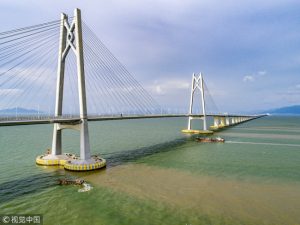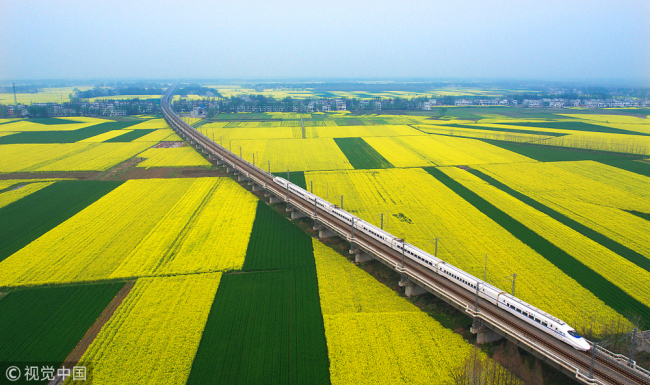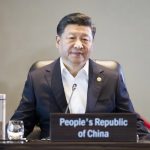By Xu Qinduo
Those familiar with the China success story describe it as a miracle, with its rapid rise from a poor country to the world’s second largest economy in as short a period as four decades.
What’s especially relevant to Pacific island nations such as Papua New Guinea (PNG), which is hosting the Asia-Pacific Economic Forum summit, is the fact that some 700 million Chinese people were lifted out of poverty.
So, what’s the secret of China’s rapid development? Countries differ in their cultures, systems and in many other aspects. However, some successful practices can be applicable to other countries. In China’s case, there are two ingredients to its recipe for success which are most relevant to developing countries, including those in the Pacific islands: infrastructure construction and trade.
From the very beginning of reform and opening-up 40 years ago, China stressed the importance of infrastructure construction – building roads, bridges, railways, ports, pipelines and so on. As the popular Chinese saying goes, “If you want to be better off, build roads first.”
As a result, China can now boast one of the best infrastructures in the world. Its high-speed rail line, built mostly in the past ten years, is 22,000 kilometers long – longer than the rest of the world combined.
This belief in infrastructure connectivity may explain the origin of the Chinese Belt and Road Initiative (BRI), which PNG has just signed up to this year. BRI is a trillion-dollar investment plan focused mostly on infrastructure development with the aim of boosting trade and investment.
Since the initiative came into being in 2013, a total of nearly 29 billion US dollars have been invested by the Chinese side in countries and regions under the BRI, creating some 244,000 jobs, according to Chinese official statistics. The numbers seem reasonable given that China has contributed about 30% of global economic growth over the past years.
A recent report from AidData, a development finance research lab based at the College of William & Mary in Virginia in the United states, suggests that Chinese connective infrastructure is spreading economic growth across large regions. The conclusion was drawn after defining and studying more than 4,400 Chinese development projects implemented in 138 countries.
Inspired by the Chinese infrastructure initiative, other major players are now also mapping out their own investment plans. Australia just announced some 1.5 billion dollars of infrastructure investment in the Pacific Islands. The US is allocating 60 billion dollars to support infrastructure projects in the Asia-Pacific region. The Europeans have also set aside money for similar projects.
If this seems like competition, then bring it on. “Infrastructure needs in developing Asia and the Pacific will exceed 22.6 trillion dollars through 2030, or 1.5 trillion per year, if the region is to maintain growth momentum,” according to a report by the Asian Development Bank in 2017.

In short, the more investment there is, the better prospect for economic growth there will be. For example, one bottleneck on PNG’s economic growth has been the high cost of transport due to a lack of ports, highways and bridges. More investment would certainly be welcomed.
Trade has been another element in China’s meteoric rise, in particular, since it joined the World Trade Organization in 2001.
Free trade allows the relatively unfettered flow of goods and services and allocation of resources based on needs across national borders, thus maximizing the potential of benefits that countries may secure from doing business with each other.
China has become the largest trading partner of some 120 countries and regions around the world. Trade plays a major role in China’s economic boom, which in turn spurs more trade with more nations. Other developing countries would surely benefit from studying and learning from the Chinese experience.
While infrastructure investment has been on the rise, potentially furthering economic expansion in the Asia-Pacific region, there’s growing concern over the rise of protectionism coupled with unilateral approaches.
For example, the US imposed extra tariffs on goods from the European Union, Japan, India, Russia, China, Canada, Mexico, etc, as a result of its “America First” principle. And then, there’s retaliation. Trade tensions have clouded the prospect of global economic performance.
As pointed out by Chinese President Xi Jinping at a business forum at the APEC summit over the weekend, “The world is currently going through big changes … unilateralism and protectionism are overshadowing economic growth.” He warned, “Mankind will have to choose between cooperation or resistance – opening-up for mutual benefit or a zero-sum game.”
Mr. Xi posed the question, “Mankind has again reached a crossroads. Which direction should we choose: cooperation or confrontation Openness or closing doors. Win-win progress or a zero-sum game?”
Facing the clouds and shadows of protectionism, it seems that the majority of economies remain in favor of free trade.
PNG Prime Minister, Peter O’Neil, has said “Smaller economies like Papua New Guinea place considerable reliance on international trade, and especially on international trade rules. We suffer when rules are broken or ignored, and we benefit when rules are followed by all countries, large and small.”
Australian Prime Minister, Scott Morrison, has said “Tit-for-tat protectionism and threats of trade wars are in no one’s interests economically, and undermine the authority of global and regional trading rules that benefit us and the people.” The solution to trade disputes is, he noted, “more likely to be found around the negotiating table than it is in rebuilding a tariff wall”.
While one country may continue to hide behind the tariff wall, the rest of the world should continue to move forward to free up international trade.
China, for example, is transforming its economic growth model from relying on exports and investment to one driven more by domestic consumption. Tremendous opportunities are being created for its trade partners to export to its market of 1.4 billion people. Countries should seek to make the most of this opportunity.
For PNG, one of those opportunities would surely be tourism, given how large the Chinese population is, and their eagerness for discovering the world.
Note: Xu Qinduo, current affairs commentator of China Media Group and co-author of The Rise of China and the Real Western World. The article reflects the author’s own views.



